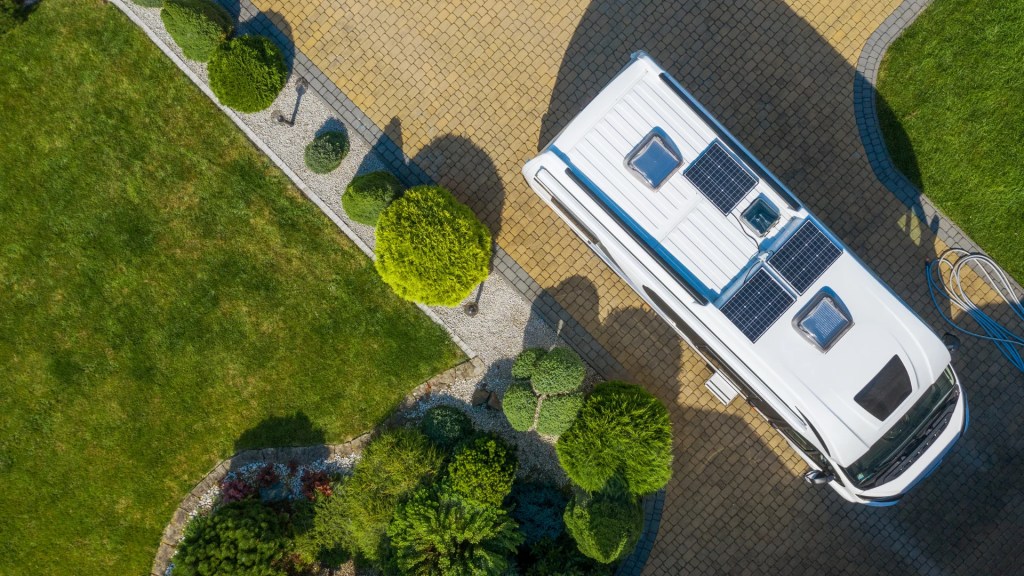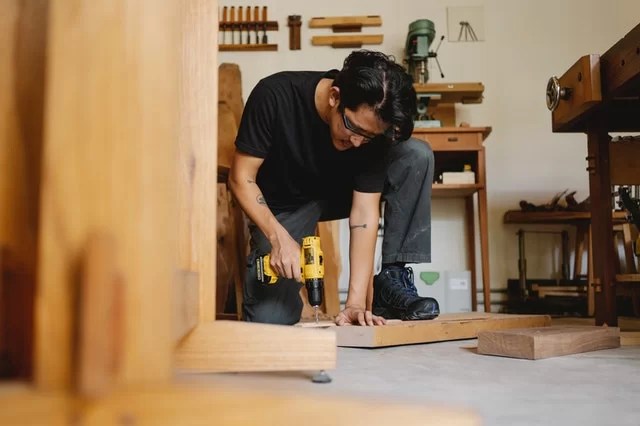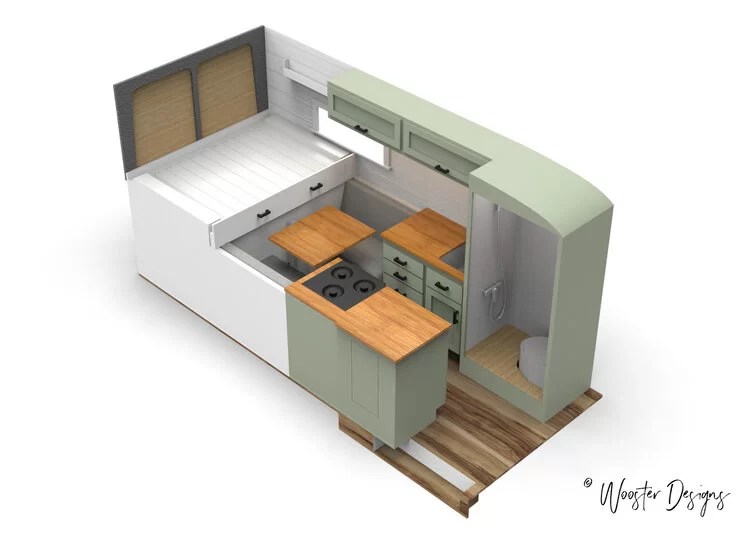If you’re planning a van conversion, you have two options: do it yourself or hire a professional van builder.
If you choose the DIY route, start by reading our article: How to Convert a Cargo Van Yourself – What You Need to Know.
Then, continue with this guide, where we’ll go over the most common van conversion mistakes to avoid to help you create a functional and comfortable camper van.
Van Conversion: 19 Mistakes to Avoid
1/ Not Defining Your Needs Properly
Before starting your van conversion, the first and most important step is to clearly define your needs:
- When will you use your van? Will you live in it full-time or just take it on occasional weekend trips?
- What essentials do you need for comfort?
- Do you require a dedicated workspace?
- Will you install a fridge? A heater?
- …
Why is this a mistake?
If you don’t take the time to assess what you truly need and instead make assumptions, your van may not fully suit your lifestyle. This could lead to discomfort or frustration down the road.
To determine your real needs, ask yourself the right questions and test van life before committing to a layout. You can rent a campervan for a weekend or take a short trip in your empty van before converting it.
This hands-on experience will help you better understand your water, electricity, gas, and storage requirements.
Skipping this step is a major mistake!
2/ Poorly Sizing Your Water Tanks
This mistake often stems from not defining your needs properly. If you don’t accurately assess your water consumption, you might end up with tanks that are either too small or unnecessarily large.
Your freshwater and greywater tanks should be sized according to your daily usage and the number of days you plan to be self-sufficient.
- Oversizing your tanks means extra weight, which can negatively impact fuel efficiency and vehicle performance.
- Undersizing your tanks means running out of water frequently, forcing you to refill more often than expected.
Once again, the best way to determine your ideal water capacity is to test van life first. Keep in mind that water consumption in a camper van is significantly lower than in an apartment.
Readers also liked: How to Choose and Size Your Van’s Water Tanks Properly
3/ Poorly Sizing Your Electrical System

If you’re installing an electrical system in your van, it’s likely because you want to be energy-independent and avoid relying on external power sources.
To achieve this, you’ll need the right equipment: solar panels, a charge controller, auxiliary battery(ies), an inverter, etc. But most importantly, your setup must be tailored to your actual energy needs—another reason why defining those needs in advance is crucial.
How to Calculate Your Daily Energy Needs
To size your system correctly, you must first estimate your daily power consumption. Consider the following:
- The devices and appliances you’ll be using
- Their energy consumption (in watts)
- The number of hours you’ll use each one per day
Once you have this estimate, you can determine the appropriate battery capacity and select the right solar panel setup.
Key Factors to Consider When Choosing Your Electrical Equipment
- Sunlight availability in the worst-case scenario (e.g., during winter)
- Desired energy autonomy (How many days can you go without recharging?)
- Lifespan of your system (Do you need a long-term setup or just a temporary one?)
Why is this a mistake?
- Oversizing your system means spending more money than necessary on expensive equipment you won’t fully utilize.
- Undersizing your system can leave you without enough power to meet your daily needs, forcing you to find alternative charging solutions—such as plugging into a campground or RV park.
Properly sizing your electrical system is essential for a reliable and cost-effective van conversion. Avoiding this mistake will save you both money and frustration in the long run!
4/ Using the Wrong Wire Size
If you don’t size your electrical wires correctly, you might end up with cables that are too short—but more importantly, improperly sized wires can overheat, increasing the risk of fire.
This is a serious safety hazard, so don’t overlook this step!
To ensure a safe and efficient electrical setup, you must calculate the correct wire gauge based on the power requirements of each connected device.
What to Consider When Choosing Wire Size:
- Length: The wires should be long enough to reach their designated connection points.
- Gauge (diameter): Thicker wires reduce heat buildup and prevent fire hazards.
5/ Skipping the Electrical System Diagram
This is one of the most common van conversion mistakes to avoid—and one that can cause major headaches down the road!
Before you even start installing your electrical system, you must create a wiring diagram.
Why is an Electrical Diagram Important?
- It helps you plan the placement of switches, lights, outlets, and devices.
- It ensures your wiring is organized and efficient.
- It allows you to correctly size your wires and avoid costly mistakes.
How to Create Your Electrical Diagram:
- Use software like Microsoft Visio or Canva.
- Sketch it out with pen and paper.
Having a clear diagram makes the installation process much easier and helps prevent errors.
👉 Looking for inspiration? Check out this article on how to create a van electrical wiring diagram.
6/ Choosing Cheap Electrical Components
Don’t cut corners when it comes to your electrical system—especially if you plan to live in your van for years.
Low-quality electrical components may seem like a bargain at first, but they often come with shorter lifespans and poor performance. This is particularly true for budget AGM batteries and cheap solar panels.
If a crucial component fails, you’ll have to replace it sooner than expected—ultimately costing you more in the long run.
Invest in high-quality electrical equipment from the start to ensure reliability, safety, and long-term energy independence.
7/ Cutting Costs on Materials to Save Money

Of course, it’s possible to save money on your van conversion—we even wrote an article with 8 budget-friendly tips. But one thing you shouldn’t cut corners on is the quality of your materials.
Choosing cheap materials often means lower durability and a higher risk of wear and tear over time.
For example:
- If you go for the cheapest insulation, you may end up with moisture buildup and mold issues.
- If you pick low-quality wood, it could warp over time due to humidity.
Investing in quality materials from the start will prevent costly repairs later!
8/ Skimping on Insulation
If there’s one step you shouldn’t rush—aside from defining your needs—it’s insulation!
Good insulation is essential for:
✔️ Staying warm in the winter and cool in the summer.
✔️ Keeping a comfortable temperature inside your van year-round.
✔️ Reducing outside noise for a quieter and more peaceful van life.
To ensure effective insulation, choose high-quality materials and take your time with the installation.
Best Insulation Options for a Van Conversion:
- Sheep wool
- Biofiber insulation
- Cork
- Multilayer reflective insulation
9/ Creating Thermal Bridges
As mentioned earlier, insulation is crucial, and one of the biggest mistakes people make is leaving gaps that create thermal bridges.
A thermal bridge occurs when the bare metal of your van is exposed in certain areas, completely negating your insulation efforts.
To avoid this, make sure to:
✅ Fill corners, curves, and hollow beams (like the van’s structural ribs) with proper insulation.
✅ Prevent moisture buildup inside the van by eliminating cold spots.
📌 Readers also liked: How to Reduce Humidity in a Camper Van – Tips & Tricks
10/ Skipping Floor Insulation
Did you know that not insulating your van’s floor can lead to significant heat loss?
Cold air seeps in through the floor—especially in winter—since it’s in direct contact with the ground.
Even if your walls are well-insulated, a non-insulated floor will make heating your van much less efficient, wasting your energy resources.
Using polystyrene or cork insulation for the floor helps to:
✔️ Reduce heat loss and keep your van warm.
✔️ Minimize road noise for a quieter ride.
11/ Forgetting to Insulate the Water Pipes
This might seem like a small mistake, but it can become a real headache in cold weather.
If your water pipes aren’t insulated, they can freeze when temperatures drop below zero—leaving you without running water and potentially bursting your pipes.
How to Prevent Frozen Pipes in a Camper Van:
✔️ Insulate your pipes to protect them from freezing.
✔️ Use a heating probe inside your freshwater tank.
✔️ Keep your van’s interior warm with a heater.
✔️ Travel to warmer destinations in winter to avoid freezing temperatures.
👉 Check out these 9 warm destinations for winter van life!
12/ Skipping a 3D Layout Plan

Yes, some people actually start their van conversion without making a plan. 😯
But here’s the problem: without proper planning, you might end up with a layout that doesn’t match your vision or simply doesn’t work for your needs.
Jumping into the build without a clear design can lead to wasted space, poorly placed furniture, or even major regrets down the road.
Why Create a 3D Layout Plan?
✔️ Get accurate measurements to ensure everything fits.
✔️ Visualize the available space before building.
✔️ Define and validate the placement of furniture and appliances.
✔️ See how your layout will look before committing to it.
If you’re unsure which software to use, check out our article 👉 2 Free Tools for Designing Your Van Layout
Need inspiration?👉 Explore different van layout ideas here!
13/ Neglecting Measurements
No one wants a poorly fitted van interior—crooked furniture, cabinets that stick out, or pipes and cables that are too short or too long. That’s why precise measurements are essential.
Every single detail should be measured down to the centimeter. Creating a 3D layout plan will help you avoid costly mistakes and miscalculations.
⚠️ Your comfort and the quality of your van build depend on it!
14/ Ignoring Your Van’s Empty Weight
A common van conversion mistake to avoid is not considering the van’s empty weight before starting the build.
🚨 The risk? Overloading your van. This is not only dangerous but could also result in fines if you exceed legal weight limits.
What You Need to Know About Van Weight Limits:
✔️ Check your van’s empty weight and maximum authorized weight (GVWR)—both are listed on your vehicle registration.
✔️ Most vans have a gross vehicle weight rating (GVWR) of 3.5 tons (7,700 lbs), unless specified otherwise.
✔️ To calculate the weight available for your build, subtract the empty weight from the GVWR.
How to Weigh Your Van:
- Visit a vehicle inspection center
- Use a public weigh station (found at scrapyards, trucking depots, or public works sites)
Choosing your build materials wisely based on your available weight will help you stay within legal and safe limits!
15/ Poorly Distributing Weight Inside the Van
Improper weight distribution can cause uneven wear on your suspension and tires—leading to costly repairs and safety issues.
🚚 Avoid placing all the heavy furniture and equipment on one side of the van.
Instead, aim for even weight distribution between the front and back and between the left and right sides.
Your 3D layout plan will help you estimate weight distribution before installation.
📌 If you’re planning to get your van certified under the VASP (motorhome) classification, weight distribution per axle is regulated. Be sure to check local regulations before finalizing your build.
👉 Want more expert advice? Lucile and Pierre-François from Le Van Migrateur cover this topic in their ebook: “Le Manuel du Fourgon Aménagé.”
16/ Not Planning Enough Storage Space

This is one of the most common van conversion mistakes to avoid! Many people assume they won’t need much storage space—but once you start living in a van, every inch counts.
Since van life means living in a small space, optimizing storage is crucial. Without proper organization, your van will quickly become cluttered and messy.
✔️ Plan for plenty of storage solutions—drawers, cabinets, shelves… Every little space should serve a purpose!
✔️ Make sure storage is easily accessible—otherwise, you’ll end up tossing things in random corners, leading to chaos.
Why Accessible Storage Matters: Our Personal Experience
When we bought our van second-hand, it was already converted by the previous owners. Unfortunately, the drawers for our clothes are located under the bed, but due to poor design:
- The table leg blocks the drawers from opening fully.
- The latches are stiff and painful to open, making it a daily struggle.
Every morning, it’s the same frustration trying to grab fresh clothes. 😤
That’s why we’re planning to redesign our storage by adding more accessible drawers under the kitchen counter. The poorly designed drawers will instead be used for storing items we don’t need daily.
👉 Moral of the story? Make sure your storage is practical and easy to access!
Need inspiration for better van storage?
📌 Check out this article: Storage Hacks – How to Maximize Space in a Camper Van
17/ Neglecting Proper Ventilation
🚨 Don’t underestimate the importance of ventilation in your van!
You might think that cracking open a front window for a few minutes is enough to refresh the air—but it’s not.
Good airflow is essential because:
- Without proper ventilation, CO₂ builds up, reducing oxygen levels and making the air unsafe to breathe.
- Moisture gets trapped inside, leading to condensation, mold, and mildew.
To prevent these issues, there are specific regulations on the number and placement of vents based on your van’s size.
What Type of Ventilation Should You Install?
✔️ Roof vent (static or with a fan)
✔️ Side vents (allowing constant airflow)
Proper ventilation keeps your van safe, comfortable, and mold-free!
18/ Ignoring Safety Regulations
There are many safety regulations to follow when converting a van—especially if you want to register it as an RV (VASP certification in France).
Key Safety Standards to Consider:
✔️ Gas system installation: Must be done by a certified professional or officially inspected for compliance.
✔️ Weight limits and distribution: Your van must meet legal weight restrictions.
✔️ Ventilation regulations: Required for safe airflow and CO₂ control.
✔️ Structural modifications: If installing windows or a roof vent, don’t cut through load-bearing parts of the van, or you risk weakening the vehicle’s frame.
📌 Before making any modifications to your van’s structure, check the legal requirements in your country to ensure compliance.
🚨 Don’t cut corners on safety! Proper planning and research will help you avoid costly mistakes—or worse, putting yourself at risk.
19/ Expecting Everything to Go as Planned

🚐 Converting a van is a long-term project—and it rarely goes exactly as planned.
One of the biggest van conversion mistakes to avoid is thinking everything will go smoothly. The reality?
- Unexpected challenges will come up.
- Some materials may take longer to arrive.
- Certain tasks might be harder than anticipated.
For example, you might assume you can do everything on your own, only to realize you need help for specific tasks. That can be frustrating, but it’s all part of the process.
The key is to stay flexible and patient. Otherwise, frustration and delays could drain your motivation and cause you to give up on your dream van.
But trust us—the feeling of finally finishing your build and hitting the road is totally worth it! So don’t give up! 🚀
Final Thoughts
We hope this guide helps you avoid these common mistakes when converting your van.
💡 Remember: Building out your own camper van takes time, effort, and dedication—plus a bit of problem-solving and a whole lot of motivation!
📌 Curious about how much a van conversion really costs? Check out our article: Average Cost of a DIY Van Build
📌 Looking to save money on your build? Here are 8 budget-friendly tips for converting a van on a tight budget.
We hope this article gives you the resources and confidence to bring your dream van to life! If you have any questions, feel free to leave a comment or contact us via email at: contact@objectif-vie-en-van.com.
🚐 See you on the road!
Johanna & Gabriel







0 commentaires